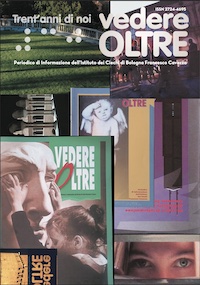In 1513, German artist Albrecht Dürer made the famous etching entitled Knight, Death, and the Devil. Set in a wooded background, a knight is mounted on a horse with the classic posture and anatomy of the equestrian monument, an elegant gait, curved neck, prominent and well-developed muscles, and regality, all confirmed by the pace that the artist has given it. The work’s median plane, occupied by the horse and knight, present formal characteristics derived from the works of great 15th-century Italian artists, while the knight’s pride and composure have Gothic-Germanic severity. The warrior’s penetrating expression betrays his human anxiety as he proceeds toward earthly and divine knowledge. His faith, a radical choice, demands that he defend metaphysical dogmas by means of earthly action. With stoic dedication, the knight obeys supreme rules that seem reflected in a strictly motivated scheme of the creation. Thus, the image has been interpreted as the emblematic representation of the “Christian soldier” who fights for a good cause, unaware of the dangers, temptations, and perils that await him. The metaphor of Christ’s paladin, embodying the principle of the defense of Christianity, conveys a broader principle of safeguarding religion, extending the role to a vast ecumene. This principle (essentially Medieval but equally as important in a time of crisis for the Catholic Church), clearly expressed by the intransigent Erasmus in his Enchiridion militis christiani (Handbook of the Christian Knight), is exemplified in this etching by Albrecht Dürer, a man and artist who was particularly sensitive to a solitary concept of human research. The anthology of symbolic contaminations, always present in Dürer’s works, is applied to the conquest of an expressive and ideological independence that this renaissance artist defends and celebrates.

In the figure of the knight, the main link in the chain of symbols seen in this etching, we recognize the image of the medieval warrior, and when joined with the image of the steed, it embodies the principles of his triumph over hostile forces. In this semantic meaning, the iconography of the knight sinks its roots in preclassic eastern and western antiquity; over the centuries, it has held an unswerving symbolic meaning, almost archetypical and common to different peoples. The horse, symbol of instinctual vital force, represents the dual significance of human experience, in which Apollonian rationality (order) and Dionysian irrationality (disorder) clash in compliance with an arcane, universal perception of worldliness. In ancient times, the ascent of gods, heroes, and the elect to heaven was represented by the image of the knight, a thousand-year-old tradition linked to our culture and a clear filiation of classicism and to the iconography of historical civilizations. Starting from antiquity, the steed, marks on the harness, changes in clothing, emblems and arms, were associated with ethical-moral metaphorical meanings. The pilot-knight, somewhat like a navigator, may be considered one who, with free will, emulates the demiurgic act of the Creator, follows a re-generative path even though starting from a subordinate status: because man can only modify things that are, not create them. Dürer created an ethical portrait that found its ideal and visual medium in the isolated warrior, since reassuring company has given way to a meditative solitude similar to the life of a mystic, the search of a wanderer. It is a clear allusion to an ideal, to an uncontaminated (although imperfect) life, strong because aware of its limits, faithful because consistent with extreme choices, noble and unequivocal because cut off from all illusory attachments. The skull seen on the left, near the epigraph with the artist’s monogram and date of execution, is an unequivocal memento mori. The letter S preceding the date alludes to the Latin word Salus (Salvation). In the diaphanous film that separates virtue from treason, courage from cowardness, life from inanimate matter, man is forbidden to forget that his life is fragile, a series of choices and risks, fortune and misfortune. In religious and lay paintings, the tame dog is a sign of absolute loyalty and total devotion to man. After faithfully following the man throughout his life, the dog is his guide on the night of his death (Anubis and Cerbero are extreme examples of this myth). The dog, for which the invisible is familiar, unites the worldly and other-worldly: in fact, it is the medium through which the living question the souls of the dead. In classical (or, more generally, western) culture, in the dog’s awareness of the hereafter we recognize the nature of the civilizing hero, more often lord and conqueror of fire, mythical ancestor. The dog is also attributed procreative sexual meanings: with its powers of mediation (along with the hare and the fox), it is considered a lunar and profound creature; in addition to its constant relationship with the land, with burial and disinterment of bones, with the female principle of moistness and fertility. As a symbol of bearer of life, it can be compared to a spark of fire, which explains the diversification or multiplicity of its attributes. The oscillation between fire and water, earth and sky, emphasizes its dual nature: celestial and chthonian. The lizard is interpreted as a pre-eminently positive sign: it seeks sunlight, motionless, belonging to the numinous sphere. Although in the etching it goes in the direction opposite that of the knight, its grueling walk toward the sun on vertical, inaccessible, steep paths, represents the soul seeking the light, with sudden movement and contemplative stillness. The personification of Death on horseback, riding beside the knight, has a gaunt face. As sovereign of the laws of nature, it wears a crown on which snakes are clasped; in its right hand it holds an hourglass, symbol of passing time. The Devil, with a goat’s face and ram’s horns, holding a pike, threatens the noble knight from behind. The evocative intensity of Dürer’s art derives from his creative and hermetic momentum, able to conceive symbolic motifs based on an ancient lexis, with unequalled intellectual and expressive power.





.png)